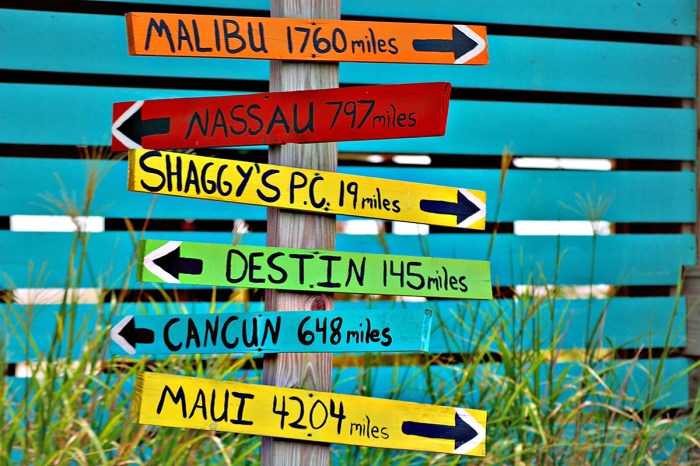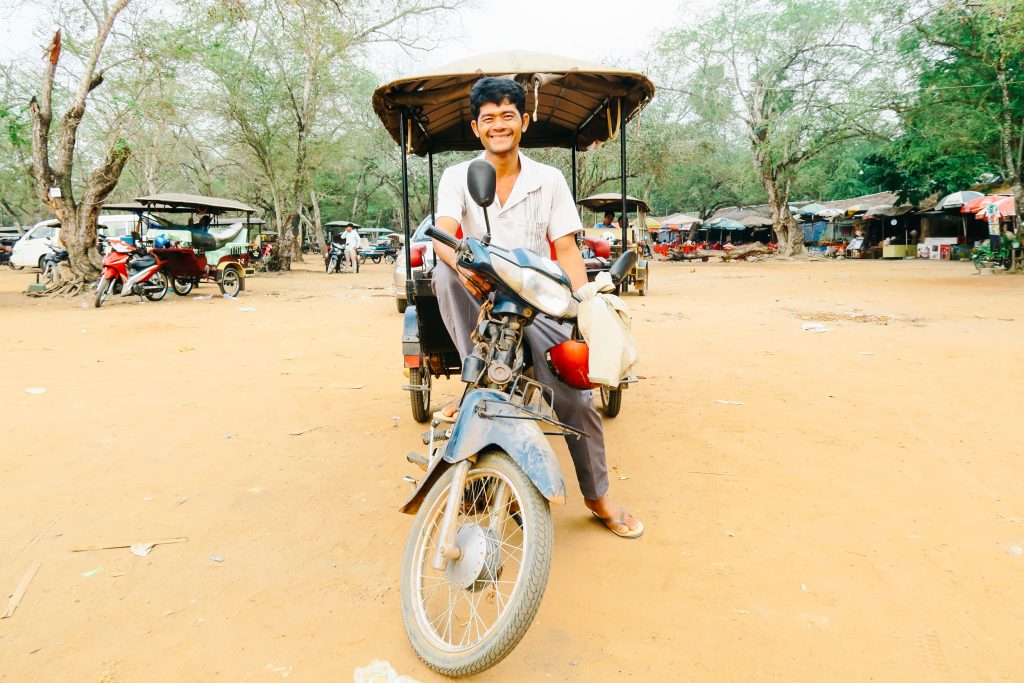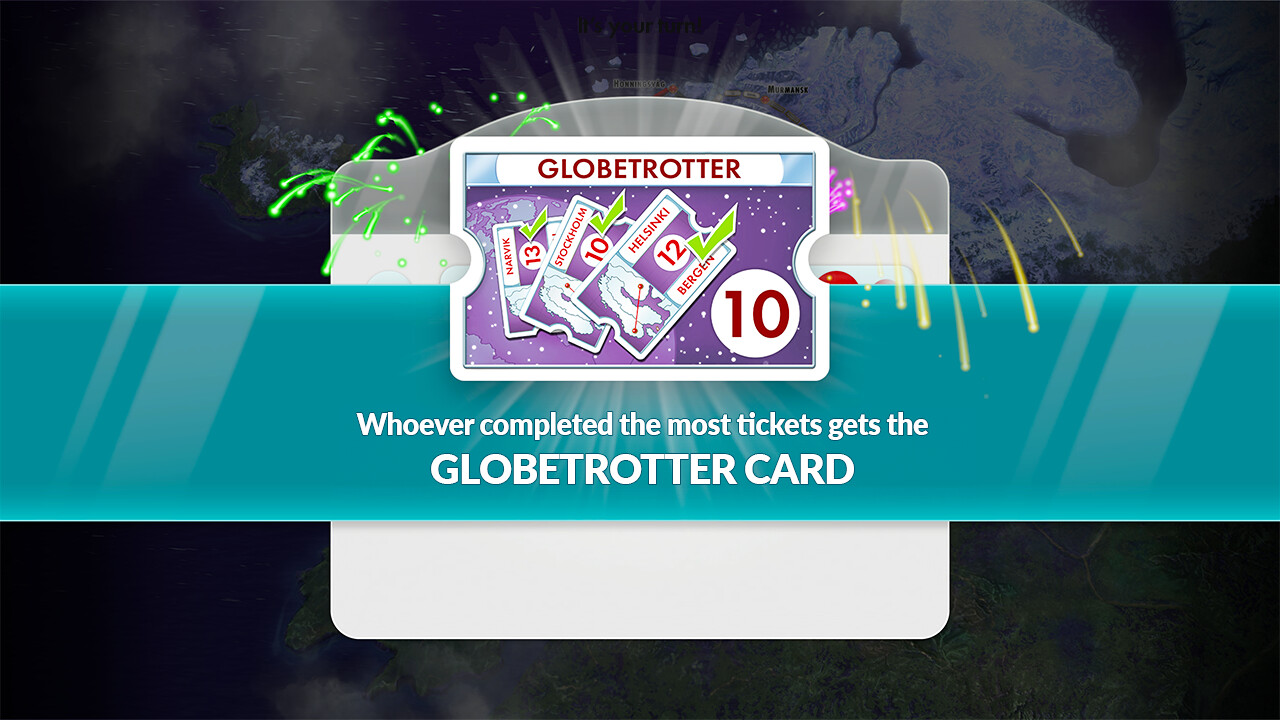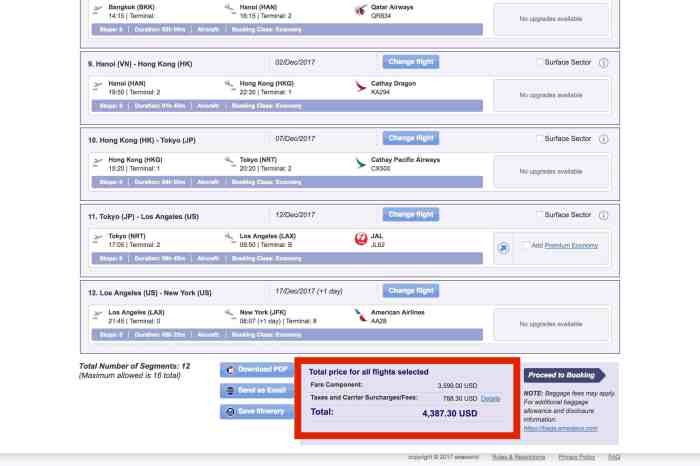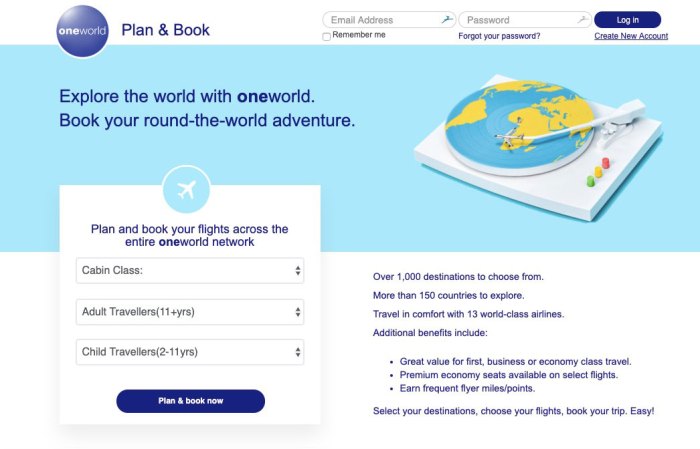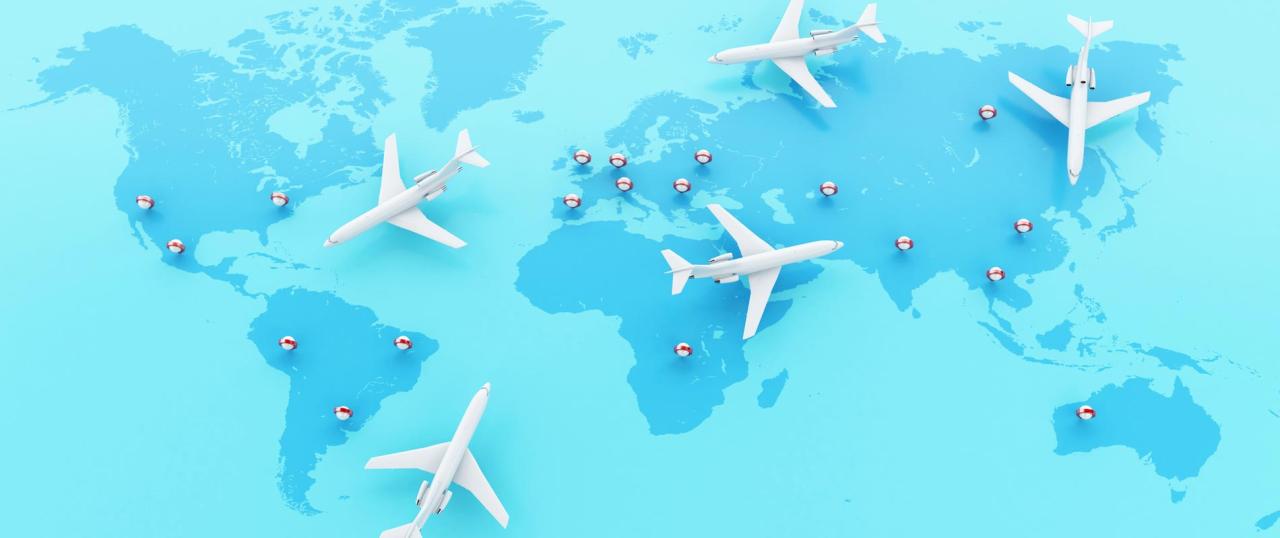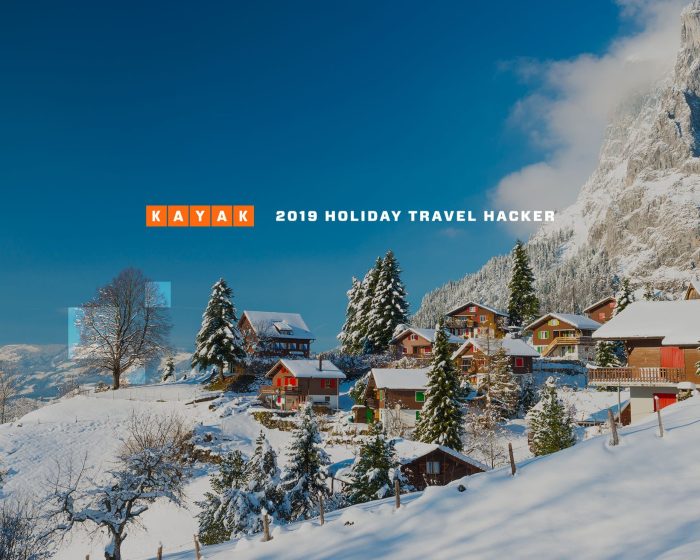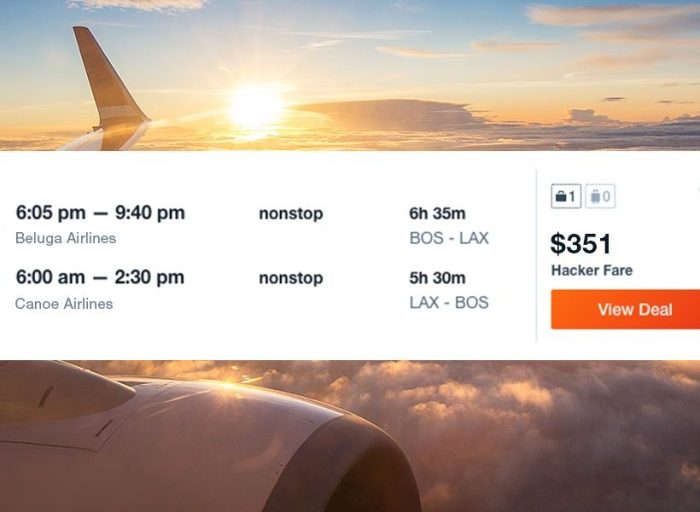How to hack airline tickets is a question that’s been debated for years. This in-depth guide delves into the strategies and tactics for finding incredible deals on airfare, revealing the secrets to maximizing savings. We’ll explore the complexities of airline pricing, dissect various booking platforms, and highlight ethical considerations along the way.
From understanding dynamic pricing models to utilizing loyalty programs effectively, this guide provides a comprehensive overview of the entire process. It also emphasizes the importance of careful planning and the avoidance of common pitfalls. The content is designed to be practical and actionable, empowering readers with the knowledge to secure the best possible flight deals.
Airline Ticket Pricing Strategies: How To Hack Airline Tickets

Source: techiestechguide.com
Airline ticket pricing is a complex interplay of market forces, operational costs, and strategic choices. Understanding these dynamics is crucial for both travelers seeking affordable fares and airlines aiming to maximize revenue. The ever-evolving nature of this market demands a nuanced approach, considering factors such as demand fluctuations, competitor actions, and economic conditions.Airline pricing strategies are not static; they adapt to real-time changes in the market, adjusting to factors like the weather, special events, and even geopolitical events.
This dynamic nature necessitates a sophisticated understanding of both the macro and micro elements driving these adjustments. Ultimately, airlines must balance the need to meet customer demand with the imperative to achieve profitability.
Factors Influencing Airline Ticket Pricing
A multitude of factors contribute to the intricate pricing models employed by airlines. Understanding these influences is essential for comprehending the variability of ticket costs.
While savvy travelers often look for ways to snag discounted airfare, sometimes the best deals are found in the unexpected. For instance, exploring the scenic routes and beautiful trails near me, like those detailed in this comprehensive guide beautiful trails near me , can inspire you to plan a trip that balances adventure with affordable travel. This approach can be a surprisingly effective way to hack airline tickets, leading to more meaningful travel experiences and maximizing your budget.
- Supply and Demand: Airline ticket prices are intrinsically linked to the balance between available seats and the level of demand. High demand for travel during peak seasons or for popular routes often leads to higher prices. Conversely, low demand or overcapacity can result in discounted fares.
- Seasonality: Travel demand exhibits significant seasonal fluctuations. Peak travel periods, such as holidays and summer vacations, usually witness higher prices. Off-peak periods, conversely, tend to feature more affordable options.
- Competitor Pricing: Airlines constantly monitor the pricing strategies of their competitors. This competitive landscape often influences pricing decisions, with airlines seeking to maintain market share and attract customers.
- Fuel Costs: Fluctuations in fuel prices significantly impact airline operating costs. Higher fuel prices are often reflected in ticket costs, as airlines aim to offset increased operational expenses.
- Operational Costs: Factors such as airport fees, maintenance costs, and crew salaries are integral components of airline operating costs. These costs are often factored into ticket prices to ensure profitability.
Pricing Models Used by Airlines
Airlines employ diverse pricing models to manage capacity and revenue. These models aim to maximize profitability while addressing the dynamic nature of the travel market.
- Dynamic Pricing: This real-time pricing strategy adjusts fares based on demand, time of booking, and other variables. Airlines use sophisticated algorithms to analyze data and adjust prices in response to changes in the market.
- Tiered Pricing: This model establishes different price tiers based on various factors. These factors may include booking time, preferred seating choices, and travel class. Early bird discounts or premium seating options exemplify this model.
- Value-Based Pricing: This model targets customers seeking affordable fares, often focusing on off-peak travel periods or non-prime routes. It’s a strategic approach aimed at filling seats and generating revenue even during less popular travel times.
- Promotional Pricing: Airlines frequently employ promotional pricing strategies, including discounts and special offers. These initiatives aim to attract customers and stimulate demand, particularly for routes or periods with lower bookings.
Impact on Ticket Availability and Cost
Airline pricing strategies directly influence ticket availability and cost. A dynamic pricing model, for example, may lead to fluctuating ticket costs based on real-time demand. This dynamic adjustment can make it difficult for travelers to predict or secure affordable tickets in advance.
Comparison of Pricing Models
The following table provides a comparative overview of different pricing models used by various airlines.
| Model Type | Target Audience | Typical Price Range |
|---|---|---|
| Dynamic Pricing | Flexible travelers, last-minute bookers | Variable, potentially higher for last-minute bookings |
| Tiered Pricing | Customers seeking specific amenities (e.g., premium seating) | Higher for premium tiers, lower for basic tiers |
| Value-Based Pricing | Budget-conscious travelers, off-peak travelers | Lower, often targeted at specific routes or periods |
| Promotional Pricing | Attracting new customers, filling seats | Significantly lower, often time-limited offers |
Understanding Ticket Purchasing Platforms
Navigating the labyrinthine world of airline ticket purchases can be daunting. Consumers face a plethora of options, from traditional travel agents to sophisticated online comparison tools. This section delves into the different platforms available, their strengths, and weaknesses, enabling informed decisions.Modern travelers have access to a diverse range of platforms, each with unique functionalities and potential benefits. Understanding these platforms is crucial for maximizing value and minimizing frustration during the ticket-buying process.
Common Online Platforms for Purchasing Airline Tickets
Various online platforms facilitate the purchase of airline tickets, each offering a distinct approach. These platforms include travel agencies, airline websites, and dedicated comparison websites. Understanding the differences between these platforms allows consumers to select the most appropriate tool for their needs.
Unlocking the secrets to snagging incredible airline deals requires a blend of strategic planning and a dash of luck. Savvy travelers often leverage dynamic pricing fluctuations and utilize flight comparison tools to find the best deals. For a comprehensive guide on travel strategies, check out Travel to understand various approaches to optimize your trip. This approach to finding the best deals can save you significant money when planning your next adventure.
- Travel Agencies: These intermediaries act as a bridge between travelers and airlines. They often offer personalized service, tailored itineraries, and potentially access to exclusive deals or packages. They typically charge commissions for their services.
- Airline Websites: Direct access to airline websites provides travelers with complete transparency regarding flight options, pricing, and baggage policies. Customers can directly book tickets without intermediaries. The user interface often mirrors the airline’s brand and design.
- Comparison Websites: These platforms aggregate flight data from various airlines and travel agencies. They present an overview of different options, facilitating comparisons based on price, schedule, and other criteria. This comparison feature allows for better deals and greater control over travel planning.
Features and Functionalities of Each Platform
Each platform presents a unique set of features and functionalities. These features influence the user experience and the potential for finding optimal deals.
- Travel Agencies: These agencies often provide personalized consultations, itinerary customization, and assistance with complex travel arrangements. They may offer additional services like hotel bookings and rental car arrangements.
- Airline Websites: These websites typically provide detailed flight information, including baggage allowance, seat selection, and in-flight services. Users can often access frequent flyer programs and manage existing bookings directly.
- Comparison Websites: These platforms specialize in presenting a vast array of options from different airlines and agencies. They typically include filters and sorting options to refine search results, enabling users to compare various flight choices based on price, duration, and other criteria.
Pros and Cons of Using Each Platform
The choice of platform depends on individual priorities and needs. Weighing the advantages and disadvantages is crucial for making informed decisions.
- Travel Agencies: Pros: personalized service, potential for exclusive deals, assistance with complex travel arrangements. Cons: higher commissions, less transparency in pricing.
- Airline Websites: Pros: direct access to flight information, often lower commissions, direct control over bookings. Cons: limited access to deals compared to comparison platforms, potentially less personalized service.
- Comparison Websites: Pros: comprehensive overview of options, easy comparison across various providers, potential for finding better deals. Cons: results may not be up-to-the-minute due to real-time updates, often require further navigation to confirm details.
Platform Comparison Table
The table below provides a concise overview of the common online platforms for purchasing airline tickets, highlighting their ease of use, customer support, and typical commission rates.
| Platform | Ease of Use | Customer Support | Typical Commission Rate |
|---|---|---|---|
| Travel Agencies | Moderate to High | Often personalized | Variable, typically higher |
| Airline Websites | High | Often standard | Usually low |
| Comparison Websites | High | Variable | Typically low |
Airline Ticket Hacking Techniques (Ethical Considerations)
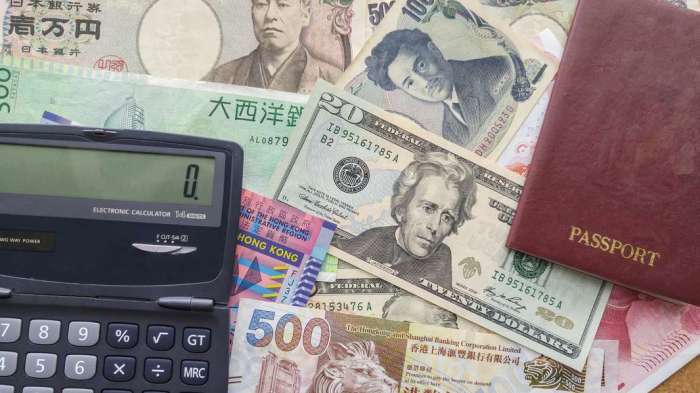
Source: thrillist.com
Navigating the complex landscape of airline ticket pricing requires a keen understanding of both the market forces and the strategies employed by travelers. This exploration delves into the realm of finding and leveraging deals, emphasizing ethical considerations and potential legal ramifications. Finding the perfect flight at the ideal price isn’t about circumventing rules; it’s about maximizing your value for the money.Understanding the intricacies of pricing algorithms and booking platforms is crucial for optimizing your travel experience.
Savvy travelers employ various techniques to capitalize on available discounts and promotions. However, ethical considerations and potential legal implications must be carefully considered. The focus here is on legitimate strategies that allow for budget-conscious travel without compromising ethical standards.
Price Tracking Strategies
Effective price tracking is essential for identifying fluctuations and spotting potential deals. Monitoring airline websites and dedicated flight aggregator platforms is vital for swift responses to price drops. Sophisticated tools and software exist for automating these tasks, providing alerts on target price points and allowing for real-time adjustments to travel plans. This process, while automated, must still be guided by ethical considerations to ensure fairness and transparency in the market.
Booking Strategies for Maximizing Discounts
Booking strategies play a crucial role in securing favorable prices. Leveraging loyalty programs, booking during off-peak hours, and considering flexible travel dates can yield substantial savings. The best time to book often varies by destination and time of year, requiring diligent research and adaptation to market trends.
Ethical Considerations in Deal-Seeking
Ethical considerations are paramount in the pursuit of airline deals. Transparency and honesty in the travel process are vital. Avoid tactics that exploit loopholes or mislead other travelers. For example, booking multiple tickets for a single trip with the intent to cancel one or more, to manipulate the system, is unethical. Fairness and respect for the system are essential.
Legal Implications of “Hacking” Techniques, How to hack airline tickets
While the term “hacking” may suggest illicit activity, many legitimate strategies are available to maximize travel deals. Carefully understanding the terms and conditions of airline websites and booking platforms is crucial to avoid any legal pitfalls. Any attempts to manipulate the system beyond the acceptable bounds of fair market practices should be avoided. Illegal activities, such as creating fake accounts to obtain more discounts, may lead to severe consequences.
Resources for Finding Cheap Airline Tickets
Numerous resources provide valuable information on finding cheap flights. Dedicated travel blogs, aggregator websites, and price tracking tools offer a wealth of information to help travelers navigate the complex world of airline pricing. Comparison websites and airline loyalty programs are valuable resources for finding deals.
Common Mistakes in Airline Ticket Purchasing
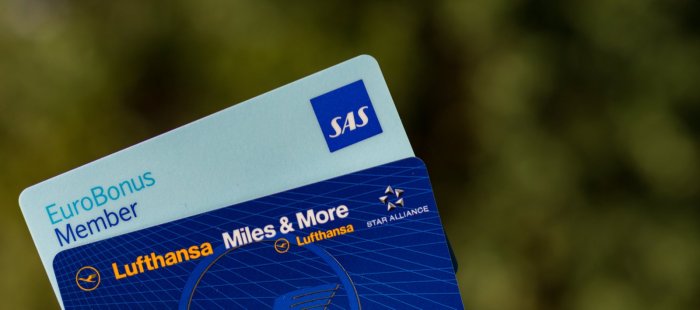
Source: altexsoft.com
Savvy travelers understand that securing the best possible flight deals requires more than just clicking “book.” A multitude of factors influence ticket prices, and overlooking critical details can lead to costly errors. Ignoring these pitfalls can result in a frustrating and ultimately more expensive travel experience. This section will detail common mistakes travelers make and provide actionable strategies to avoid them.Unforeseen expenses can quickly derail a meticulously planned trip.
From hidden baggage fees to unexpected travel disruptions, the potential for costly surprises is significant. Understanding these common errors and proactively mitigating them will help travelers secure the best possible value for their travel investments. Knowing how to navigate the intricacies of airline ticket purchasing empowers travelers to make informed decisions and ultimately optimize their travel experience.
Overlooking Baggage Allowance
Many travelers overlook baggage allowances, leading to unexpected fees at the airport. Airlines often have varying baggage policies, with fees increasing for exceeding the free allowance. This oversight can significantly impact the overall cost of a trip, especially for those traveling with substantial luggage.
Neglecting Price Comparison
Failing to compare prices across various platforms and airlines is a common mistake. Different travel agencies, websites, and airlines often offer different pricing structures. A thorough price comparison can often reveal substantial savings. Utilizing flight comparison tools can automate this process, making it easier to identify the most affordable options.
Ignoring Travel Insurance
Travel insurance is often underestimated, yet it can provide crucial protection against unforeseen events. Medical emergencies, trip cancellations, or lost luggage can lead to significant financial burdens. Travel insurance can mitigate these risks and safeguard the financial investment in a trip.
Insufficient Research on Airport and Accommodation
Insufficient research into airport transfer options and accommodation can lead to unexpected costs and delays. Factors such as airport access, transportation, and hotel location are crucial to consider. Exploring different airport transfer options, such as taxis, ride-sharing services, or public transportation, and comparing hotel options can significantly reduce travel costs.
Not Considering Alternative Airports
Consideration of alternative airports can often yield substantial savings. Flying into a secondary airport that’s closer to your final destination can reduce travel costs and time. This strategy can often result in lower flight prices and reduced transportation expenses.
Unlocking unbeatable airfare deals often involves savvy strategies, similar to finding the best hiking trails near you. For instance, exploring options like good trails near me often reveals hidden gems. These insights can translate to identifying hidden travel bargains. Ultimately, mastering the art of hacking airline tickets involves a combination of flexibility and meticulous research.
Table of Common Mistakes, Consequences, and Prevention
| Mistake | Consequences | Prevention |
|---|---|---|
| Overlooking baggage allowance | Unexpected fees at the airport, adding to the total cost | Thoroughly review baggage policies before booking, and consider purchasing checked baggage insurance if necessary. |
| Neglecting price comparison | Missing out on potential savings, potentially paying more than necessary. | Utilize flight comparison websites and apps to compare prices from multiple airlines and travel agencies. |
| Ignoring travel insurance | Financial burdens due to unforeseen events (medical emergencies, trip cancellations, lost luggage). | Research and purchase travel insurance that covers potential risks and expenses. |
| Insufficient research on airport and accommodation | Unexpected costs (taxis, ride-sharing, accommodation), delays, and a less smooth travel experience. | Thoroughly research airport transfer options and accommodation options, considering factors such as location, accessibility, and reviews. |
| Not considering alternative airports | Potentially missing out on lower flight prices and reduced transportation expenses. | Explore alternative airports and compare flight costs, considering travel time and transportation expenses. |
Illustrative Examples of Successful “Hacking” Techniques
Unlocking the best deals on airfare often involves more than just luck; it’s about strategically applying a blend of research, flexibility, and leveraging available tools. This section dives into concrete examples of successful “hacking” techniques, demonstrating how to maximize savings and secure the ideal flight.
Last-Minute Deal Hunting
Last-minute travel often presents unexpected opportunities for substantial savings. Proactive monitoring and a willingness to adjust travel dates are key.
- Flexible Dates: Utilizing tools that identify price fluctuations for various dates around your desired travel period is crucial. Consider a window of a few days either side of your preferred dates. Sites like Google Flights and Skyscanner offer this functionality. You might find significantly cheaper flights by shifting your departure or arrival day by just one or two days.
- Alert Systems: Setting up email or app-based alerts for specific routes or price drops can automate this process. This ensures you’re notified immediately when deals emerge. Be sure to specify the desired departure and arrival airports.
- Unconventional Airports: Exploring alternative airports near your desired destination could unearth surprisingly affordable options. Sometimes, flights from a slightly less central airport can be substantially cheaper. This is a strategy that can be combined with flexible dates.
- Airline and Third-Party Websites: Compare prices across various airline websites and dedicated travel aggregators. Look for potential deals that might not be readily apparent on just one platform.
Leveraging Loyalty Programs
Loyalty programs are powerful tools for accumulating points and miles that can translate into substantial savings on airfare.
- Accumulating Points: Consistent use of eligible credit cards and frequent travel can build substantial loyalty program balances. Consider utilizing credit cards that offer bonus points on travel expenses.
- Redeeming Points: Strategic redemption of points is key. Scrutinize redemption options to find the best value for your accumulated points. Often, specific airline partners offer better deals than others.
- Combining with Other Strategies: Combining loyalty program points with last-minute deals can yield significant savings. This might involve utilizing points for a portion of the flight, supplementing a last-minute deal with the rest of the payment.
Flight Comparison Websites
These platforms allow users to rapidly compare prices from various airlines and travel agents, significantly streamlining the search process.
- Multiple Search Criteria: Use various search parameters, including flexible dates, airports, and number of stops, to uncover potential deals. Compare results from different comparison platforms, such as Google Flights, Kayak, and Skyscanner, to see if any differences exist.
- Filtering Options: Employ filters like price, airlines, and flight duration to refine your search and find flights that meet your criteria. Prioritize options that align with your preferences and budget.
- Hidden Deals: Scrutinize results thoroughly, as sometimes hidden deals or special offers are available. Pay close attention to the fine print of any deals or offers presented.
Finding the Best Price for a Specific Route
This scenario involves determining the ideal flight for a given route.
- Define the Route: Specify the exact origin and destination airports, desired travel dates, and preferred class of travel. Determine any specific requirements or preferences.
- Utilize Comparison Tools: Input the specific criteria into multiple flight comparison websites to compare available options. Take note of any unusual or unexpected results from different platforms.
- Analyze Results: Compare prices, flight times, and potential layovers across various options. Consider the total cost, including potential fees, taxes, and other add-ons.
- Book the Flight: Once you’ve identified the best deal, book the flight promptly. Review the booking details carefully before confirming the transaction.
Analyzing Refund Policies and Cancellation Options
Airline ticket purchasing often involves navigating intricate refund and cancellation policies. Understanding these policies is crucial for securing your financial interests and avoiding potential pitfalls. Airlines employ diverse strategies to manage refunds, reflecting their varying business models and market conditions. A comprehensive understanding of these policies empowers travelers to make informed decisions and minimize financial losses in case of unforeseen circumstances.Airline refund policies are complex and often depend on the specific ticket type, booking class, and the reason for cancellation or change.
The lack of transparency in these policies can leave passengers vulnerable to unexpected fees and delays. Knowing the intricacies of these policies can prevent costly surprises and enable travelers to plan for contingencies.
Unlocking the secrets to snagging cheap flights, or “hacking” airline tickets, often involves strategic timing and flexibility. For instance, exploring local trails can be a fantastic way to unwind after a long flight or before your next journey. Finding the best hiking spots near me, like those detailed in this guide best hiking spots near me , can be just as important as finding the best deals on flights.
Ultimately, these insights can help optimize your travel budget and make your next adventure more rewarding.
Refund Policies Offered by Different Airlines
Different airlines adopt various approaches to refund policies, often influenced by factors such as the fare type, booking class, and cancellation circumstances. Some airlines offer more flexible policies for certain fares or classes of service, while others adhere to strict guidelines. For example, some budget airlines might offer only limited or no refunds on tickets purchased online, while full-service carriers may provide more options.
Cancellation Options Available for Different Ticket Types
The availability of cancellation options significantly varies depending on the ticket type. Advanced purchase tickets, or those purchased with special discounts or promotions, may have stricter cancellation policies compared to flexible or refundable tickets. This is especially true for non-refundable fares often offered by budget airlines.
Importance of Understanding These Policies Before Purchasing Tickets
Thorough examination of airline refund and cancellation policies is essential before purchasing tickets. Knowing the specific conditions associated with each fare type allows travelers to select the most appropriate option based on their needs and risk tolerance. This preemptive measure safeguards against financial losses in case of unforeseen circumstances, such as illness or job changes.
Processes for Requesting Refunds or Changes
The process for requesting refunds or changes varies depending on the airline and the specific circumstances. Most airlines provide online portals or dedicated customer service channels to facilitate these requests. Understanding the specific procedures and deadlines for submitting such requests is crucial to ensuring a smooth process. Timely action is key to avoid potential delays or complications.
Illustrative Examples of Refund Scenarios
| Scenario | Relevant Policy | Typical Processing Time |
|---|---|---|
| Booking a non-refundable ticket and canceling 24 hours before departure | Non-refundable tickets typically offer no refunds. | No refund issued. |
| Booking a refundable ticket and canceling 7 days before departure | Refundable tickets generally allow for a full refund. | 7-10 business days. |
| Booking a ticket and experiencing a flight delay due to unforeseen weather conditions | Airlines have specific policies for flight delays and cancellations. | Time varies depending on airline and delay duration. |
| Booking a ticket with a change fee and needing to alter the travel dates | Change fees are common and vary between airlines. | Processing time depends on the airline and availability of desired dates. |
Final Review
In conclusion, securing the best airline deals requires a blend of strategic planning, platform awareness, and ethical considerations. This guide has provided a thorough exploration of the tactics and pitfalls involved, enabling readers to navigate the complex world of airline ticketing with confidence. By understanding the factors that influence pricing, the nuances of various booking platforms, and the importance of ethical considerations, travelers can effectively “hack” their way to substantial savings on their next journey.
FAQ Guide
What are some common mistakes travelers make when booking airline tickets?
Failing to check baggage allowances, neglecting to compare prices across multiple platforms, and overlooking travel insurance options are common errors. These oversights can lead to unexpected costs and a less-than-ideal travel experience.
How can I maximize discounts and promotions when booking airline tickets?
Utilizing loyalty programs, booking during off-peak hours, and actively monitoring for deals and promotions are effective strategies. Combining these approaches often leads to significant savings.
What are the ethical considerations when employing “hacking” techniques for airline tickets?
Always prioritize ethical practices. Avoid any actions that could potentially harm other travelers or violate terms and conditions. Respect the guidelines and rules of the airlines and booking platforms.
What resources are available to learn about legitimate ways to find cheap airline tickets?
Numerous websites and resources offer tips, tricks, and insights into securing cheap flights. Explore comparison websites, travel blogs, and online communities dedicated to finding deals. Always verify the legitimacy and reputation of these sources before relying on their advice.





